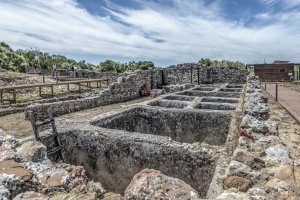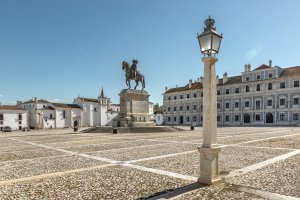PRIMITIVE PREHISTORY
MONUMENTS OF EARLY MAN
The Alentejo has one of the greatest concentrations of Neolithic dolmens and menhirs in Europe. The Cromeleque dos Almendres is perhaps the most renowned – predating Stonehenge by some 3,000 years, it was only discovered in the 1960s and you are likely to find it free of crowds as the sun sets.
Notable others include the Anta Grande do Zambujeiro (Portugal’s largest dolmen), the Menir da Meada at Castelo de Vide (the tallest menhir in the Iberian Peninsula, at 7 metres) and megaliths in Portalegre and Reguengos de Monsaraz.
The Alentejo’s megaliths are considerably older than other western Europe monuments, and their creation points to the dawn of ordered society: the development of agricultural practices, religious and spiritual frameworks and communal living.























